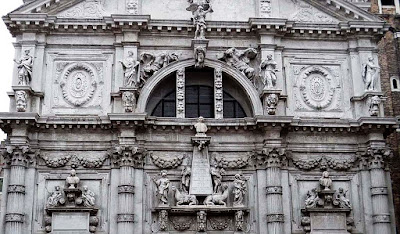Italy | Venice | Enrico Dandolo #6

By the 1070s both the Byzantine Empire and the Venetian Republic were threatened by the rapacious Normans from western Europe. The Normans were descendants of pirates, freebooters, and marauders from Iceland, Denmark, and the western Scandinavian Peninsula who by the tenth century had settled in the part of northern France that now bears their name—Normandy. Ambitious, foot-loose, and militaristic, they quickly moved east and by 1017 had established footholds in southern Italy. They soon controlled most of the southern half of the Italian Peninsula and by 1072 had seized Sicily. Their leader Robert de Hauteville, known better known as Robert Guiscard (“the Crafty”) then set his sights on the Golden Apple, Constantinople, the ultimate prize of a long string of marauders dating back to Alaric the Goth and Attila the Hun. His plan was to proceed from the Norman strongholds on the boot heel of Italy across the Strait of Otranto to the coastline of the Balkans and seize the city of Dur...



